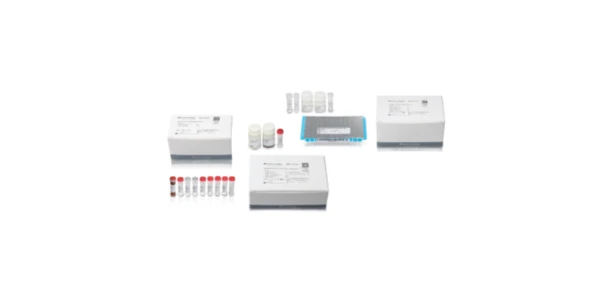The Effects of Cannabis on Brain Development: Research Outlook
Research presented at this year’s Society for Neuroscience meeting casts considerable light on this important and timely question
-
The 2018 Society for Neuroscience conference – the world’s largest meeting on brain research – showcased many interesting discoveries and developments this year. One focal point centered around recent research on the effects of cannabis on brain development and cognition.
-
With cannabis legalization preceding at an ever-increasing clip, it is more imperative than ever to explore the effects of cannabis on prenatal development, adolescent and adult cognitive performance, and other critical areas.
- Research in these areas is essential in shaping and revising regulations for public health guidelines.
- Without further robust research efforts, we are destined to learn the outcome and consequences before securing the knowledge needed to blaze the proper path forward.
Cognitive effects of prenatal cannabis use
Cannabis use can be common among pregnant women – and in some cases even prescribed as a remedy for morning sickness and nausea. The effects of cannabis use in this context are not widely understood – although research results are now emerging.
A group from Washington State University reported on cognitive changes in offspring of heavy cannabis-using rats. In the study, a cohort of rats were exposed to controlled doses of cannabis vapor for 2 hours a day from pre- to post-pregnancy. THC levels in the blood correlated to those of humans smoking a few puffs a day.
The results of a behavioral test – similar to the Wisconsin Card Sorting Test – demonstrated that rats exposed to cannabis in utero learned the test’s initial task easily enough. However, cannabis exposed rats “showed marked deficits in their ability to shift strategies when a new rule was implemented.” After a delayed period, the rats appeared to learn this new task and reward strategy -- although the behavior diminished after repetitions compared with the unexposed subjects.
The interpretation is that the rats appear to suffer impairment in cognitive flexibility – they learn a task just fine but struggle in adjusting tactics. They may also exhibit short-term memory effects. The authors acknowledge that the behavioral changes may not be due to altered intelligence, but rather changes in motivation.
Nonetheless, the results indicate important behavioral – and potentially biological – changes arising from in utero cannabis exposure.
Biological effects of prenatal cannabinoid exposure
Citing the growing body of research that shows lower short-term memory and problems in abstract reasoning from in utero cannabis exposure, a group led by researchers from the US and Germany examined the underlying mechanism of cannabis effects on neurotransmission in the brain. The investigators focused on the role of glutamate in learning and memory.
Pregnant rats were administered a synthetic THC drug, and adolescent pups were tested to examine three parameters: Are there alterations in hippocampus dependent memory? What changes are observable at the glutamate receptor synapse? What signalling mechanisms underly the effects?
The prenatal cannabis exposed (PCE) rats exhibited effects in memory via a behavior test. They also showed synaptic plasticity and learning alterations, and demonstrated decreased expression and signalling through NCAM, a glutamate receptor modulator.
Overall, the results reflect previous observations and furthermore offer an interesting therapeutic possibility – could attenuating the function of NCAM possibly alleviate deleterious effects of cannabis on learning and memory in prenatal exposed rats?
Cannabis effects on adolescent learning and memory
It is increasingly clear that cannabis use can affect prenatal development, although the precise mechanisms remain the subject of a growing number of investigations. It is also known that brain development continues through adolescence, as neural connections are strengthened and pruned for efficiency. The obvious question becomes what are the effects of cannabis exposure on adolescent brain development and function?
Two studies presented at the conference addressed this question from different angles of investigation.
The first study looked at the effects of adolescent cannabinoids on dopaminergic transmission in the midbrain. Dopaminergic pathways, including those in the substatia nigra (midbrain), connect areas involved in movement, reward process behavior, and the reinforcement of memory consolidation.
Adolescent rats were given the synthetic cannabinoid (WIN 55212-2) over the course of 25 days, after which dopaminergic pathway activity was measured by means of microdialysis. The results, coupled with behavioral analysis, indicate the brain is biochemically sensitive to adolescent exposure, and prolonged cannabis exposure can lead to elevated dopamine levels and disruption of normal behavioral control. Since dopaminergic pathways in adolescent brains are more active than in adults, imbalances can have lasting effects on habit formation and behavioral control.
The second study looked adolescent cannabis use and effects on neural connectivity in rats. Prefrontal regions of the brain, responsible for planning and self-control, continue to mature through late adolescence. During this period, inhibitory neurons propagate and serve to balance the activity of excitatory neurons in this region. The formation of nets (lattice-like structures) function to support these inhibitory neurons.
Results of biochemical and brain imaging experiments, following adolescent cannabinoid treatment, demonstrated brain structural changes and alterations in activities associated with reward response, planning, and self-control. These changes appeared to extend into adulthood.
Conclusions
- Aside from the facts that experiments were performed in rats in some cases using high doses and/or synthetic cannabis formulations, the results of these studies paint a more detailed picture of the cannabis-brain connection.
- These investigations indicate that prenatal, early development, and adolescent exposure to cannabis can a have pronounced impact on higher brain function – effects which can persist into adulthood. What is not yet clear is the threshold of exposure, or whether adult exposure by itself has similar effects.
- Nonetheless, these and other emerging results may help to educate decision making when it comes to legalized access -- particularly among young adults.
The results support the fact that only careful and well-defined production of cannabis and cannabis products can offer the requisite control of dosages and formulations. This information is critical for effectively targeting the therapeutic window for medicinal applications.
A superb review of current and ongoing research into the effects of cannabis on brain development can be found here.
An engaging infographic on the subject can be found here.
The Scientist is a brand of our parent company LabX Media Group.










